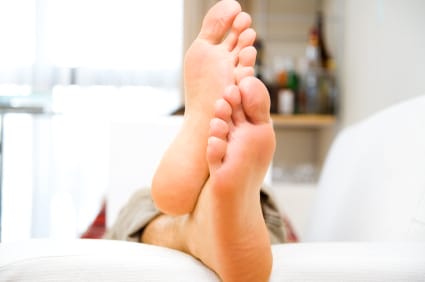 It’s true: feet really can affect the well-being of the entire body. Up to 95 percent of people with temporomandibular joint (TMJ) disorder also have flat feet or collapsed arches. If the foundation goes bad, it can have an impact almost anywhere else, according to specialists called pedorthist, who focus on the use of footwear and supportive devices to address foot conditions.
It’s true: feet really can affect the well-being of the entire body. Up to 95 percent of people with temporomandibular joint (TMJ) disorder also have flat feet or collapsed arches. If the foundation goes bad, it can have an impact almost anywhere else, according to specialists called pedorthist, who focus on the use of footwear and supportive devices to address foot conditions.
Improper gait, which can stem from muscle weakness, motor impairment or structural problems with the foot, can lead to knee and hip injuries as well as back pain. But there are ways to manage common foot ailments so they don’t end up causing more issues later on.
One of the most common complaints among foot patients is plantar fasciitis, which is partial tearing and swelling of the thick ligament on the bottom of the foot. This band of tissue connects the heel bone to the toes and anchors the arch of the foot. When the fascia is overstretched or overused, it can become inflamed and painful and make walking more difficult.
Plantar fasciitis is managed in many different ways. The majority of patients will respond with conservative measures: stretching exercises, anti-inflammatory medications, ice, shoe gear, and exercise modification, cortisone injections, and custom-made orthotics that slip into shoes to help support the arch of the foot, thereby alleviating the strain on the fascial band. In approximately 5 to 10 percent of plantar fasciitis patients, surgery can relieve the problem. Conservative treatment usually has better outcomes when the patient seeks help sooner rather than later after the initial onset of pain. It’s best to see a doctor within two months after first noticing the pain.
Other common problems include tibial tendon disorder, Achilles tendinitis, and an arthritic foot. The posterior tibial tendon helps hold the arch up and provides support upon stepping off on the toes when walking. If this tendon becomes inflamed, over-stretched or torn, a patient may experience pain on the inner ankle and gradually lose the inner arch on the bottom of the foot. The condition can be treated with orthotics that have a very deep heel cup.
Achilles tendinitis, caused by wearing shoes that are too short or not stretching properly before a vigorous workout, also can be treated with arch supports. An arthritic foot responds well to shoes that have been modified with extra cushioning that creates little “nests” for the bones of the foot so there’s less pressure on the joints.
Bunions and hammertoes also are common foot problems. A bunion is a structural deviation of bone or tissue around the great toe joint near the base of the big toe and is often treated with surgery. But a patient can try wearing a sandal or a wider, deeper shoe or orthotics first to see if that helps with bunion pain.
Hammertoes are caused by muscle imbalance and occur when the toes start to curl up and act like little hammers. This condition also may require surgery for correction.
Patients with most foot problems shouldn’t wait to see a professional. The advice from podiatrists: get evaluated as soon as possible, before the problem gets worse.
Related Articles By Cathe:
Exercising with Plantar Fasciitis
Ankle Swelling: What’s Causing My Ankles and Feet to Swell?
3 Ways Your Feet Change with Age and How It Can Impact Your Fitness Training

